Little Hounds, Big Hearts: Exploring Small Hound Dog Breeds
** Introduction **
When it comes to choosing a dog, small hunting dog breeds offer a unique blend of charm, energy, and loyalty. These little dogs may be small in size, but they have big hearts and an even bigger zest for life. Perfect for families, singles or seniors, small hunting dogs bring a lot of joy without requiring as much space as their larger counterparts.
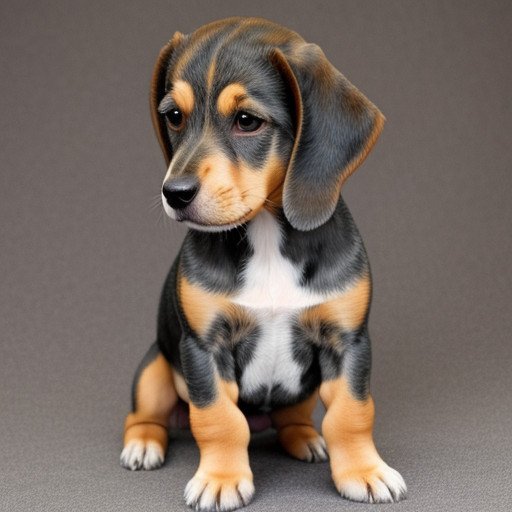
Table of Contents
Small hunting dog breeds are known for their keen senses and hunting instincts, making them both alert and intelligent companions. Breeds like the Beagle, Dachshund, and Basset Hound each have their own distinct personalities and characteristics, but all share a common thread of being affectionate and great with children. Whether you live in an apartment or have a spacious backyard, these dogs can adapt well to a variety of living situations, as long as they get adequate exercise and mental stimulation.
Their manageable size makes them easy to handle, but don’t be fooled – they still have the spirit and stamina to maintain an active lifestyle. If you are considering adding a dog to your family, exploring small hunting dog breeds may lead you to the perfect, loyal friend who will bring endless love and joy into your life.
10 Popular Small Hound Dog Breeds ;
1. Beagle :
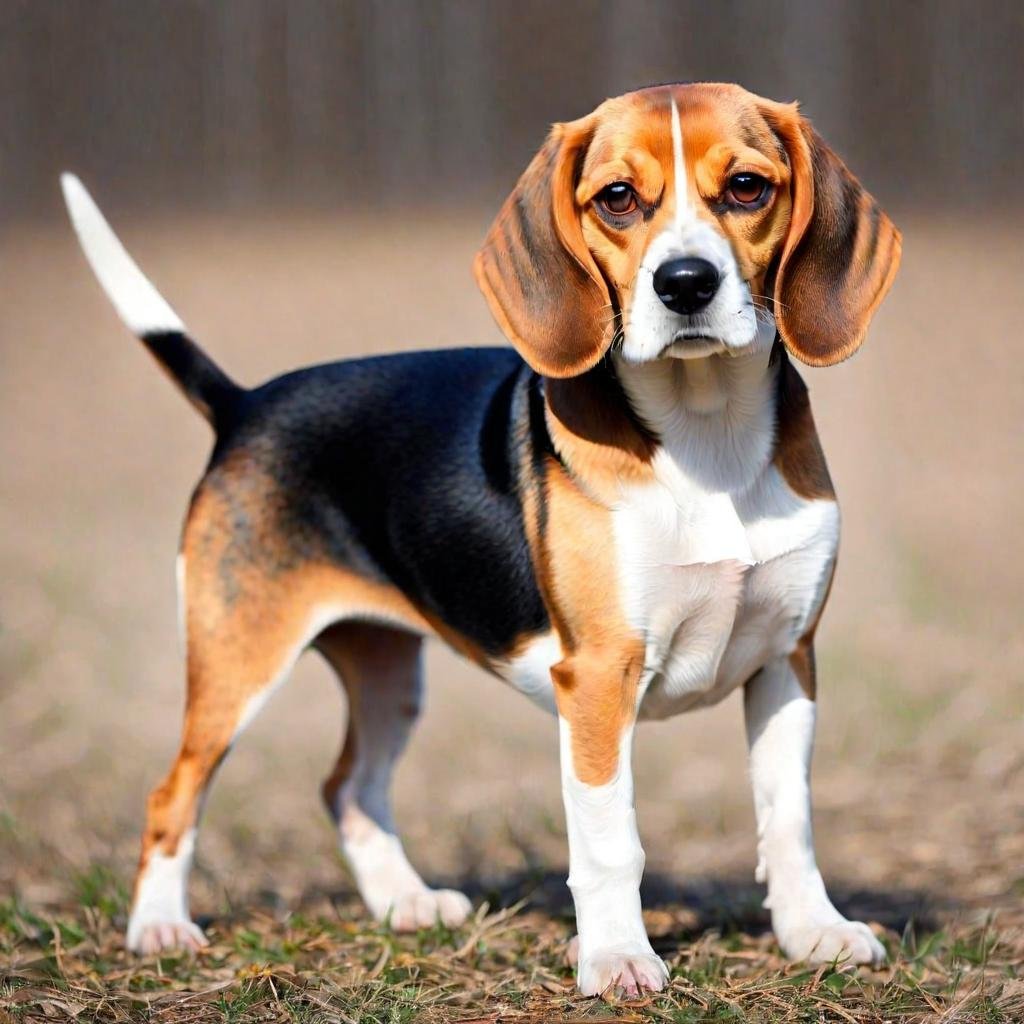
Height
- Male: 14-16 inches (35-40 cm)
- Female: 13-15 inches (33-38 cm)
Weight
- Male: 22-24 pounds (10-11 kg)
- Female: 20-22 pounds (9-10 kg)
Color
- Common colors include tricolor (black, white, and brown), lemon, red and white, and other combinations of these colors.
Temperament
- Beagles are known for their friendly, curious and happy nature. They are friendly dogs that enjoy the company of both humans and other dogs. Beagles are also very playful, intelligent and are known for their distinctive howls.
Lifespan
- Typically, Beagles live for 12-15 years.
History and Origin
- The Beagle originated in Ancient Greece, but the breed we know today was developed in England around 1830. They were bred as scent hunters to track small prey, primarily rabbits. Their excellent sense of smell and tracking abilities have made them popular as both hunting dogs and family pets.
Characteristics
- Beagles are small to medium-sized dogs with a strong body and short coat. They have long, floppy ears, expressive eyes, and a tail that is often held high. Their keen sense of smell and tracking instincts make them excellent at following scents.
Care Tips
- Exercise: Beagles are energetic and need regular exercise to stay healthy and happy. Daily walks and playtime are essential.
- Diet: A balanced diet tailored to their age, weight, and activity level is crucial. Beagles can be prone to obesity, so portion control is important.
- Grooming: Beagles have short coats that require minimal grooming. Weekly brushing will help keep their coat healthy and reduce shedding.
- Training: Consistent and positive reinforcement training is key. Beagles are intelligent but can be stubborn, so patience is necessary.
- Health: Regular vet check-ups are important to monitor common health issues such as hip dysplasia, ear infections, and obesity.
Beagles make wonderful pets for families and individuals because of their affectionate nature and playful spirit. With proper care and attention, they become loyal and loving companions.
2. Dachshund :
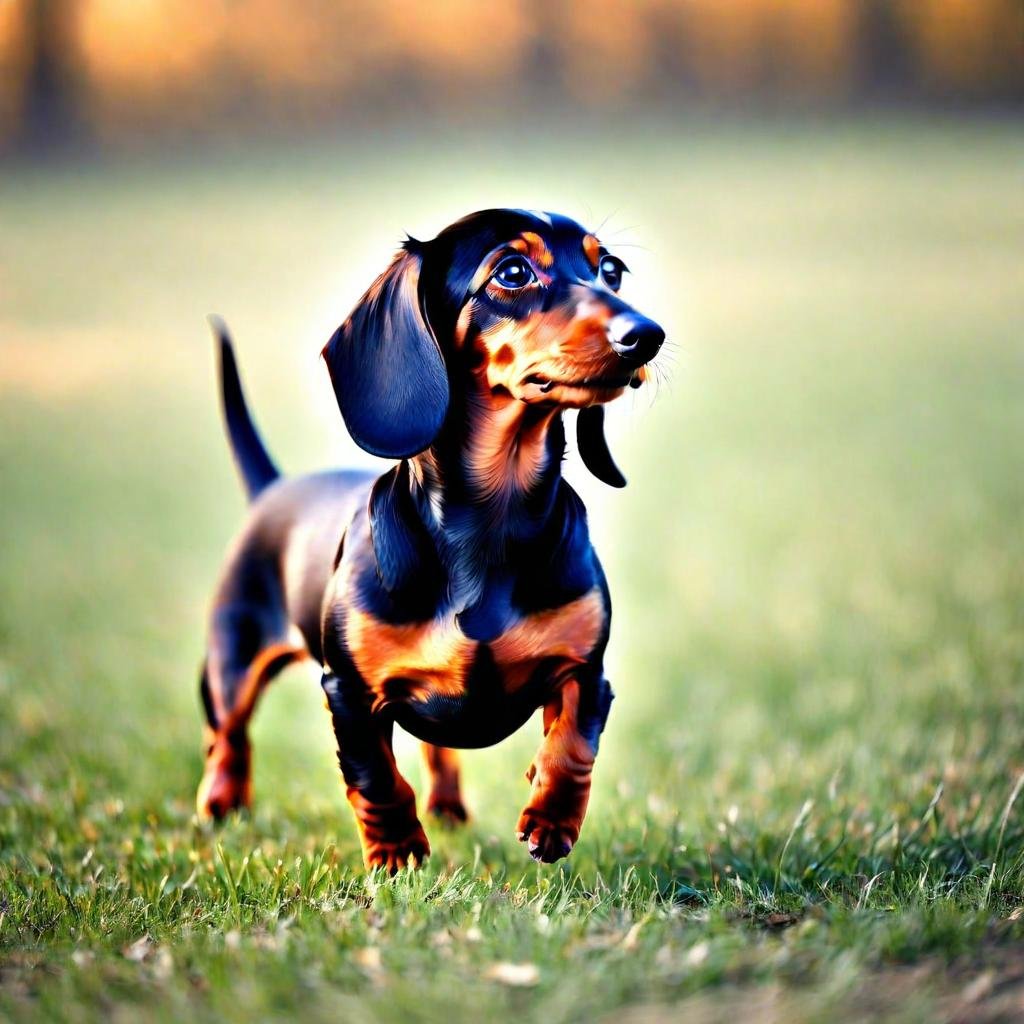
Height
- Male: 8-9 inches (20-23 cm)
- Female: 8-9 inches (20-23 cm)
Weight
- Male: 16-32 pounds (7-14 kg)
- Female: 16-32 pounds (7-14 kg)
Color
- Dachshunds come in various colors and coat patterns including solid colors (such as red, black, chocolate), dapple (lighter spots over a darker base), brindle, and piebald.
Temperament
- Dachshunds are dogs with lively, adventurous and curious natures. They are affectionate and closely attached to their families, but can also be independent and stubborn. Dachshunds are known for their alertness and loyalty, often displaying a fearless behavior despite their small size.
Lifespan
- Typically, Dachshunds live for 12-16 years.
History and Origin
- The Dachshund, also known as the “Wiener dog” or “sausage dog”, originated in Germany several centuries ago. They were bred to hunt badgers and other burrowing animals, using their long bodies and keen sense of smell to locate and dig caves. This hunting background has contributed to his determined and sometimes stubborn nature.
Characteristics
- The Dachshund has a distinctive long body, short legs and a deep chest. They come in three coat varieties: smooth (short-haired), long-haired, and wire-haired. Their ears are floppy and their eyes are alert and expressive. The Dachshund has a proud carriage and confident gait despite its small stature.
Care Tips
- Exercise: Daily exercise is important to keep Dachshunds healthy and prevent weight gain. They enjoy walks, playtime, and mental stimulation.
- Diet: Proper nutrition is crucial to prevent obesity, which can strain their long backs. Monitor their food intake and avoid excessive treats.
- Grooming: Depending on the coat type, grooming needs vary. The smooth-coated Dachshund requires minimal care, while the long-haired and wire-haired varieties require regular brushing and occasional trimming.
- Training: Dachshunds are intelligent but can be stubborn, so early socialization and consistent, positive reinforcement training are essential.
- Health: Because of their long spines, the Dachshund is prone to back problems such as intervertebral disc disease (IVDD). Avoid activities that put pressure on their back and use a harness instead of a collar for walks.
Dachshunds are devoted companions and are suitable for both city and country living, as long as their exercise and health needs are met. Their unique appearance and enthusiastic personality make them a favorite breed among dog lovers around the world.
3. Basset Hound :
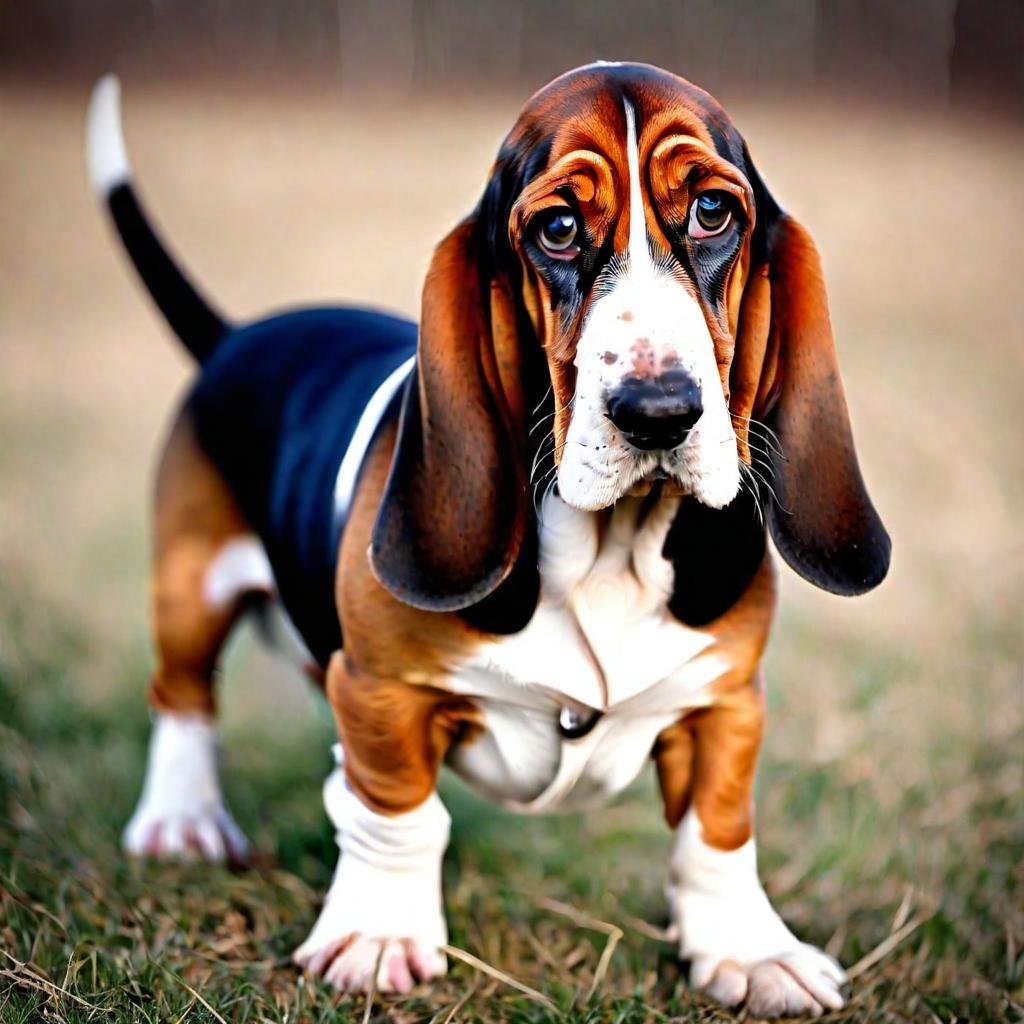
Height
- Male: 12-15 inches (30-38 cm)
- Female: 11-14 inches (28-36 cm)
Weight
- Male: 55-75 pounds (25-34 kg)
- Female: 45-65 pounds (20-29 kg)
Color
- Basset Hounds typically come in tri-color (black, white, and brown), lemon and white, or red and white. They have a short, dense coat.
Temperament
- Basset Hounds are known for their gentle, calm demeanor and affectionate nature. They are friendly, social dogs that get along well with children and other pets. Despite their calm nature, they tend to be stubborn and can be independent thinkers
Lifespan
- Typically, Basset Hounds live for 10-12 years.
History and Origin
- Basset Hounds originated in France and were bred from larger scent dogs for short legs, allowing them to stay close to the ground for easy tracking of scent trails. They were originally used for hunting small animals such as rabbits and hares due to their exceptional sense of smell and stamina.
Characteristics
- Basset Hounds have a distinctive appearance due to their long ears, loose skin and short legs. They have a deep chest and a powerful nose. Their expressions are often gentle and soulful, reflecting their affectionate nature.
Care Tips
- Exercise: Despite their short legs, Basset Hounds require regular exercise to avoid obesity and maintain overall health. Daily walks and play in a safe area are recommended.
- Diet: Monitor their food intake to avoid overeating and obesity, which can put pressure on their joints and back. A balanced diet appropriate for their age and activity level is important.
- Grooming: Basset Hounds have a short coat that requires regular brushing to reduce shedding and keep their coat healthy. They may require the occasional bath, especially after outdoor adventures.
- Training: Basset Hounds are intelligent but can be stubborn, so early and consistent training with positive reinforcement is important. Use patience and rewards to motivate them.
- Health: Basset Hounds are prone to ear infections due to their long ears, so regular ear cleaning is important. They may also experience joint problems, so avoid activities that put pressure on their legs and back.
Basset Hounds are beloved for their affectionate and easy-going nature, making them excellent companions for families and individuals who appreciate their unique charm and loyal personalities.
4. Petit Basset Griffon Vendéen (PBGV) :

Height
- Male: 13-15 inches (33-38 cm)
- Female: 13-15 inches (33-38 cm)
Weight
- Male: 25-35 pounds (11-16 kg)
- Female: 25-35 pounds (11-16 kg)
Color
- PBGVs come in a variety of colors including white with any combination of lemon, orange, black, sable, grizzle, or tricolor markings.
Temperament
- The Petit Basset Griffon Vendéens are lively, outgoing and friendly dogs known for their cheerful and independent personalities. They are intelligent and curious, always ready for adventure. PBGVs are affectionate towards their families and get along well with children and other pets.
Lifespan
- Typically, PBGVs live for 12-15 years.
History and Origin
- The Petit Basset Griffon Vendéen originated in France and was developed as a scent hound for hunting small animals such as rabbits and hares. They are one of the four Griffon Vendéan breeds, known for their rough coat and keen hunting skills. The word “Petit” in their name refers to their smaller size than the Grand Basset Griffon Vendéen.
Characteristics
- The PBGV has a rough, shaggy coat that is weather-resistant and has a fibrous texture. They have a keen sense of smell and keen hunting instincts. Their ears are long and set low on the head, giving them an attractive and expressive appearance. The PBGV has a medium build with a strong frame, suitable for endurance and agility.
Care Tips
- Exercise: PBGVs are active dogs that enjoy regular exercise and mental stimulation. Daily walks, playtime, and activities that engage their senses are recommended.
- Diet: Provide a balanced diet suitable for their age, size, and activity level to maintain their health and prevent obesity.
- Grooming: Regular brushing is essential to keep the hair from becoming matted and maintain the texture of their coat. Sometimes there may be a need to trim excess hair around the ears and legs.
- Training: PBGVs are intelligent but can be independent, so early socialization and consistent, positive reinforcement training are important.
- Health: Monitor their ears for signs of infection due to their long, droopy ears. Regular veterinary checkups are important to quickly detect and treat any health problems.
Petit Basset Griffon Vendéans are excellent companions for active families and individuals who enjoy spending time outdoors. Their affectionate nature, combined with their hunting instincts and lively personality, make them a delightful addition to any home that is willing to provide the mental and physical stimulation they need.
5. Whippet :
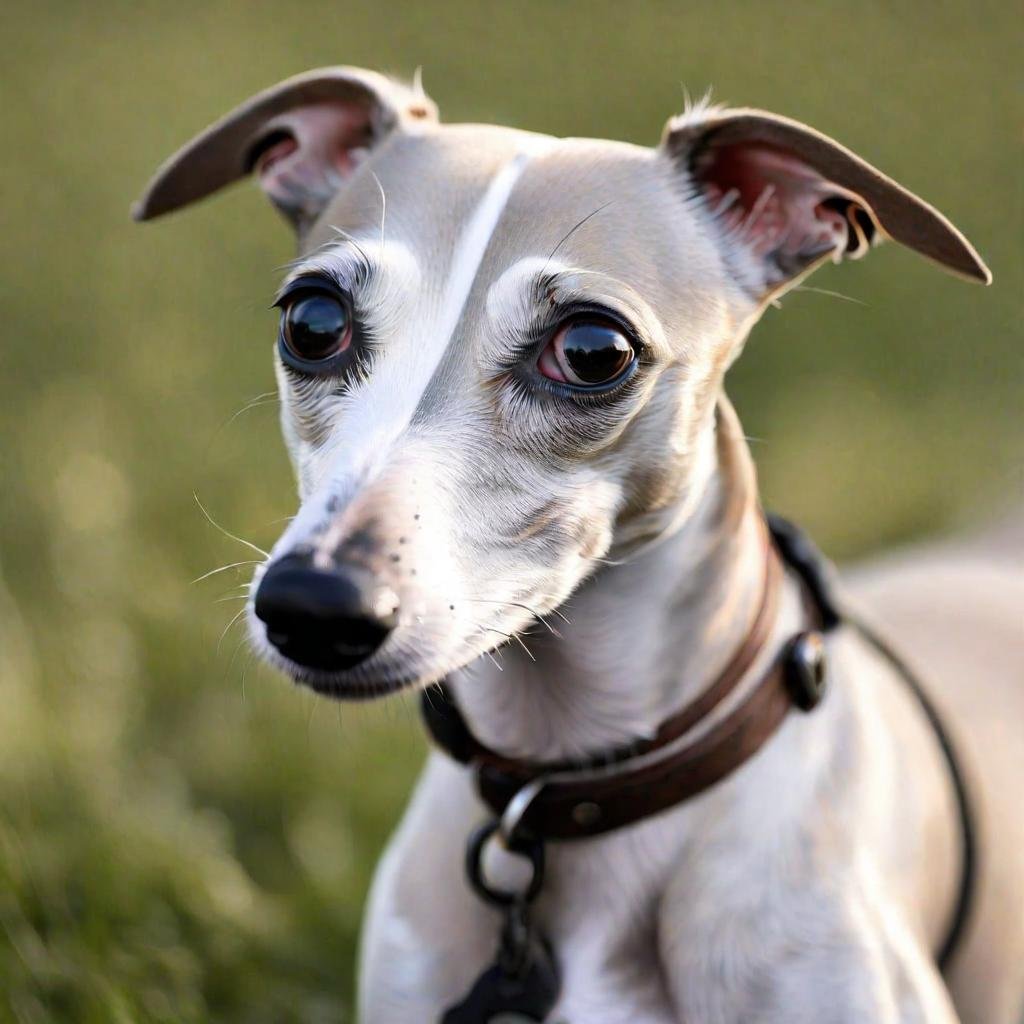
Height
- Male: 19-22 inches (48-56 cm)
- Female: 18-21 inches (46-53 cm)
Weight
- Male: 25-40 pounds (11-18 kg)
- Female: 20-35 pounds (9-16 kg)
Color
- Whippets come in a variety of colors and patterns including brindle, fawn, white, black, blue, and red. They can be solid or have markings.
Temperament
- Whippets are gentle, affectionate and calm dogs known for their beautiful appearance and sweet temperament. They are generally calm and well-behaved indoors, but can be lively and playful outside, especially when running and chasing. Whippets are friendly towards people and get along well with other dogs.
Lifespan
- Typically, Whippets live for 12-15 years.
History and Origin
- Whippets originated in England in the 19th century and were bred by crossing small greyhounds with various terriers to hunt small game such as rabbits. They were also used in races and races because of their speed and agility. Today, Whippets are valued as companions known for their grace and athleticism.
Characteristics
- Whippets have a smooth, muscular structure with a deep chest and long legs. They have a short, smooth coat that is easy to maintain. Their head is long and narrow, with expressive eyes and folded ears. Whippets are known for their incredible speed and stamina, capable of reaching speeds of up to 35 mph (56 km/h).
Care Tips
- Exercise: Whippets are active dogs that require regular exercise to keep them healthy and happy. They enjoy running and playing in a fenced area. Mental stimulation through interactive toys and activities is also important.
- Diet: Provide a balanced diet suited to their age, size, and activity level. Whippets can be prone to obesity, so monitor their food intake and avoid overfeeding.
- Grooming: Whippets have a short coat that requires minimal care. Weekly brushing and an occasional bath are usually enough to keep their coat clean and healthy.
- Training: Whippets are intelligent and respond well to positive reinforcement training methods. Early socialization is important to help them develop good manners and confidence.
- Health: Whippets are generally healthy dogs, but they can be prone to certain genetic health conditions such as heart disease and eye problems. Regular veterinary checkups are recommended to detect any problems early.
Whippets make wonderful companions for active individuals and families who appreciate their grace, affectionate nature, and athleticism. They thrive in loving homes where they get plenty of attention, exercise, and mental stimulation.
6. Italian Greyhound :
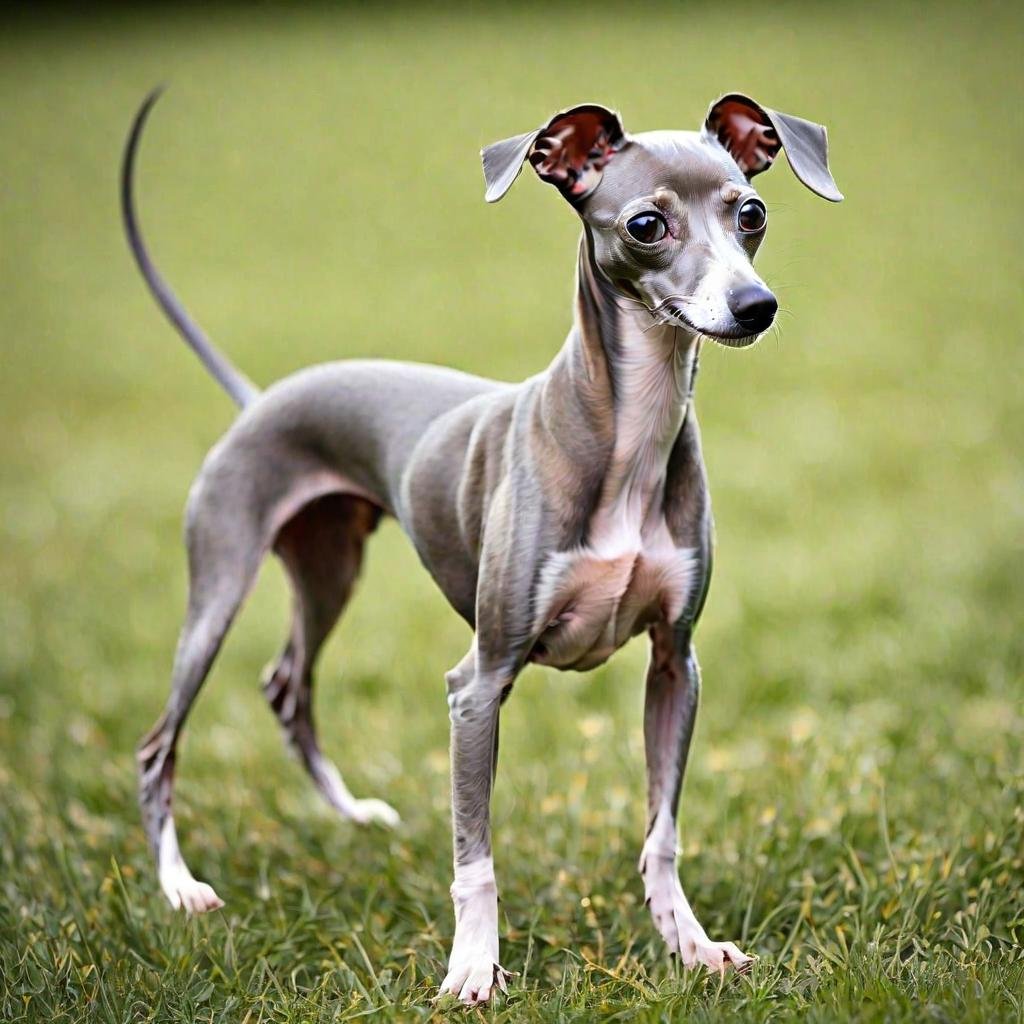
Height
- Male: 13-15 inches (33-38 cm)
- Female: 13-15 inches (33-38 cm)
Weight
- Male: 7-14 pounds (3-6 kg)
- Female: 7-14 pounds (3-6 kg)
Color
- Italian Greyhounds come in various colors including black, blue, fawn, red, cream, and white. They can be solid or have markings.
Temperament
- Italian Greyhounds are affectionate, gentle and sensitive dogs known for their beautiful and elegant appearance. They are loving and loyal to their family but can be reserved with strangers. Italian Greyhounds prefer to live indoors and are generally calm and well-behaved.
Lifespan
- Typically, Italian Greyhounds live for 12-15 years.
History and Origin
- The Italian Greyhound, as the name suggests, originated in Italy in ancient times. They were highly prized companion dogs among the elite and featured in ancient artworks and sculptures. Italian Greyhounds were loved for their small size, beauty, and affectionate nature.
Characteristics
- The Italian Greyhound’s body is slim and athletic, with a deep chest and a pressed belly. They have a long, narrow head with a pointed snout and expressive eyes. Their ears are small and can fold back. The Italian Greyhound has a short, smooth coat that requires minimal grooming.
Care Tips
- Exercise: Italian Greyhounds require regular exercise to maintain their physical and mental health. They enjoy small activities and should have a fenced area for safe resting.
- Diet: Provide a balanced diet suited to their size, age, and activity level. Italian Greyhounds can be prone to obesity, so monitor their food intake and avoid overfeeding.
- Grooming: Their short coat requires minimal grooming. Regular brushing and occasional bathing is usually enough to keep their coat clean and healthy.
- Training: Italian Greyhounds are intelligent and respond well to positive reinforcement training methods. They can be sensitive, so gentle and patient training is important.
- Health: Italian Greyhounds are generally healthy dogs, but they can be prone to dental problems, eye problems, and joint problems such as luxating patellas. Regular veterinary checkups are recommended.
Italian Greyhounds make wonderful companions for individuals and families who appreciate their beautiful appearance, affectionate nature, and gentle behavior. They thrive in homes where they receive love, attention, and opportunities for light exercise.
7. Miniature Dachshund :
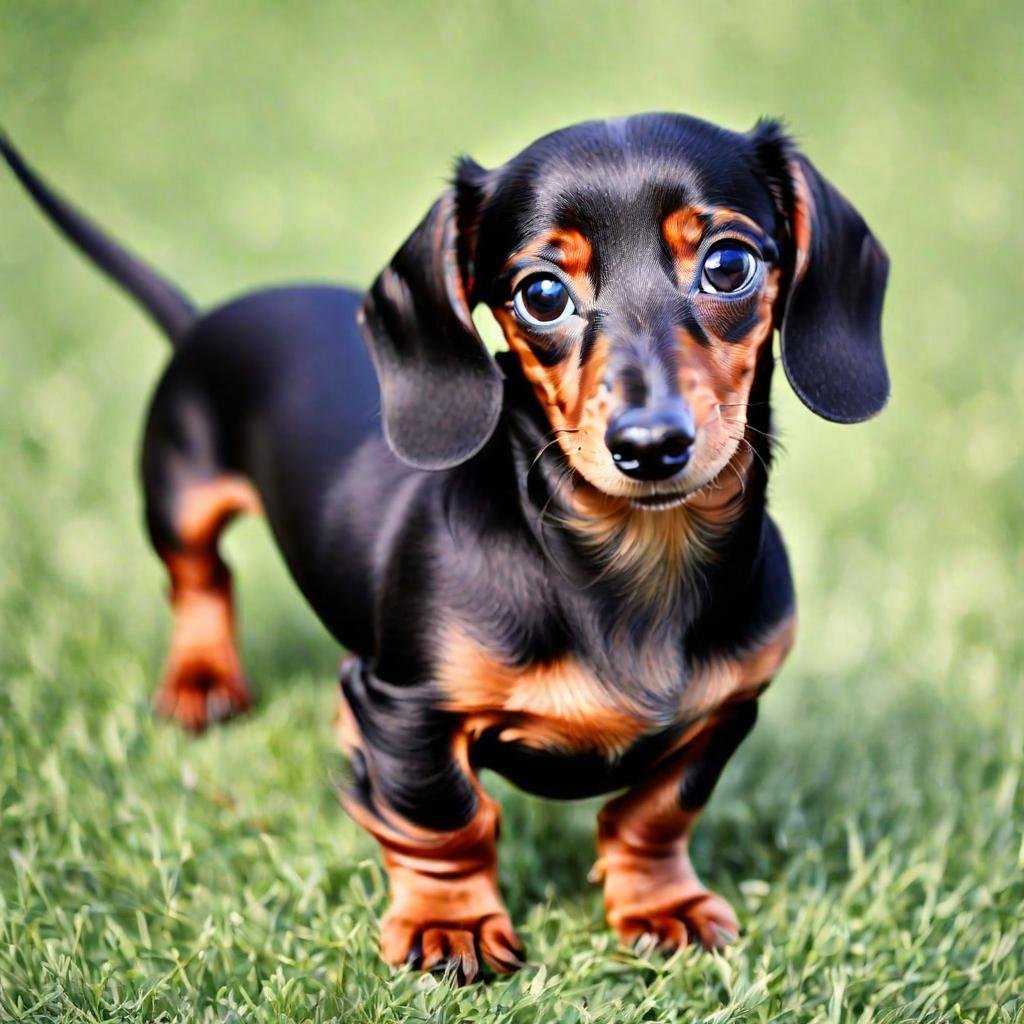
Height
- Male: 5-7 inches (13-18 cm)
- Female: 5-7 inches (13-18 cm)
Weight
- Male: Up to 11 pounds (5 kg)
- Female: Up to 11 pounds (5 kg)
Color
- Miniature Dachshunds come in a variety of colors and patterns including solid colors (such as red, black, chocolate), dapple (lighter spots over a darker base), brindle, and piebald.
Temperament
- Miniature Dachshunds are lively, smart and courageous dogs with a courageous and curious personality. They are loyal and affectionate towards their family but can be wary of strangers. Dachshunds are known for their determination and independent spirit.
Lifespan
- Typically, Miniature Dachshunds live for 12-16 years.
History and Origin
- The Dachshund, including the miniature breed, originated in Germany several centuries ago. They were bred to hunt badgers and other burrowing animals due to their long bodies and short legs, which allowed them to enter tunnels and dens. Over time, Dachshunds became popular as companion dogs known for their unique appearance and spirited nature.
Characteristics
- The Miniature Dachshund has a long body, short legs and a deep chest. They have a distinctive elongated head, a prominent snout, and expressive eyes. Their ears are floppy and set high on the head. The Miniature Dachshund has a smooth or long coat that comes in a variety of colors and patterns.
Care Tips
- Exercise: Despite their small size, Miniature Dachshunds are active dogs that require regular exercise to prevent obesity and maintain muscle tone. Daily walks and play time in a safe area are important.
- Diet: Provide a balanced diet suitable for their age, size, and activity level to prevent weight gain. Avoid overfeeding and monitor their food intake to prevent obesity.
- Grooming: The type of their coat (smooth or long-haired) determines their grooming needs. The smooth-coated Dachshund requires minimal grooming, while the long-haired Dachshund requires regular brushing to prevent tangles and mats.
- Training: Miniature Dachshunds are intelligent but can be stubborn, so early socialization and consistent, positive reinforcement training is essential. Use rewards and praise to motivate them.
- Health: Because of their long spines, Miniature Dachshunds are prone to back problems such as intervertebral disc disease (IVDD). Avoid activities that put pressure on their back and use a harness instead of a collar for walks. Regular veterinary checkups are important to monitor their spinal health.
Miniature Dachshunds make loving and devoted companions for individuals and families who appreciate their spirited personalities, loyalty, and affectionate nature. With proper care and attention to their unique needs, they grow up to be happy and healthy members of the family.
8. Basenji :
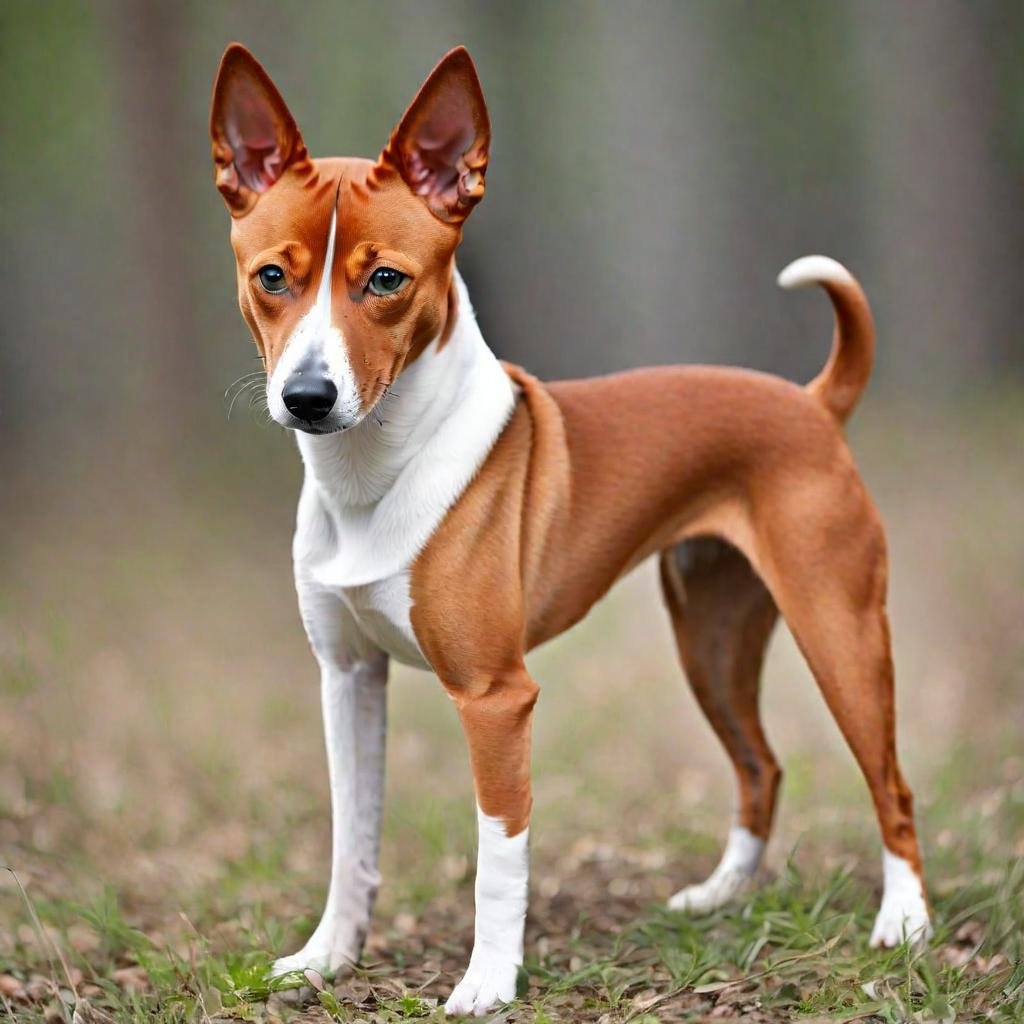
Height
- Male: 16-17 inches (41-43 cm)
- Female: 15-16 inches (38-41 cm)
Weight
- Male: 22-24 pounds (10-11 kg)
- Female: 20-22 pounds (9-10 kg)
Color
- Basenjis typically come in red, black, tricolor (black, tan, and white), or brindle. They often have white markings on their chest, feet, and tail tip.
Temperament
- Basenjis are intelligent, independent, and alert dogs known for their curious and cat-like behavior. They are affectionate towards their families but can be aloof with strangers. Basenjis are energetic and playful, often engaging in activities such as climbing and exploring.
Lifespan
- Typically, Basenjis live for 12-14 years.
History and Origin
- The Basenji is an ancient breed originating from Central Africa, specifically the Congo region. They were originally bred as hunting dogs for tracking game, including small animals and birds. The Basenji is known for its unique hunting style of quietly stalking its prey.
Characteristics
- The Basenji has a distinctive appearance with a beautiful conformation, raised ears and a curled tail. They have a short, smooth coat that requires minimal grooming. Basenjis are known for their yodel-like sounds rather than barking, which makes them unique among dog breeds.
Care Tips
- Exercise: Basenjis are active dogs that require regular exercise to prevent boredom and destructive behavior. They enjoy activities like running, hiking and playing in a safe area.
- Diet: Provide a balanced diet suitable for their age, size, and activity level to maintain their health and prevent weight gain.
- Grooming: The Basenji has a short coat that requires minimal care. Regular brushing and occasional bathing is usually enough to keep their coat clean and healthy.
- Training: Basenjis are intelligent but can be stubborn and independent. Early socialization and consistent, positive reinforcement training are important for establishing good behavior.
- Health: Basenjis are generally healthy dogs, but they can be prone to certain genetic health conditions such as Fanconi syndrome (a kidney disorder) and hip dysplasia. Regular veterinary checkups and health checks are recommended.
Basenjis are unique and charming dogs known for their hunting abilities, intelligence, and distinctive vocalizations. They make loyal and affectionate companions to individuals and families who understand their independent nature and are willing to provide them with the mental and physical stimulation they need.
9. Harrier :

Height
- Male: 19-21 inches (48-53 cm)
- Female: 18-20 inches (46-51 cm)
Weight
- Male: 45-60 pounds (20-27 kg)
- Female: 40-55 pounds (18-25 kg)
Color
- Harriers typically have a short coat that comes in a variety of colors including tri-color (black, white, and tan), red and white, or lemon and white.
Temperament
- Harriers are friendly, outgoing and energetic dogs known for their cheerful and affectionate nature. They have good temperaments and get along well with children and other pets. Harriers are intelligent and enjoy activities that stimulate their mind and body.
Lifespan
- Typically, Harriers live for 12-15 years.
History and Origin
- The Harrier is one of the oldest British hunting breeds, dating back to medieval times. They were originally bred as scent hounds for hunting rabbits, foxes and other small game. Harriers have strong hunting instincts and are known for their stamina and agility in the field.
Characteristics
- The Harrier has a strong and athletic build with a deep chest and strong legs. They have a broad head, a well-defined halter and a friendly expression. The Harrier has a short, dense coat that is easy to maintain. They have sonorous barks and a keen sense of smell, making them excellent hunting companions.
Care Tips
- Exercise: Harriers are active dogs that require regular exercise to keep them physically and mentally stimulated. They enjoy long walks, jogging, and opportunities to roam in a safe area.
- Diet: Provide a balanced diet suited to their age, size, and activity level to maintain their health and energy levels. Monitor their food intake to prevent obesity.
- Grooming: The Harrier has a short coat that requires minimal care. Regular brushing helps remove loose hair and keep their coat clean.
- Training: Harriers are intelligent but can be independent, so early socialization and consistent, positive reinforcement training are important. They respond well to rewards and praise.
- Health: Harriers are generally healthy dogs, but they can be prone to certain health problems, such as hip dysplasia and ear infections. Regular veterinary checkups are important for early detection of any health problems.
Harriers make wonderful companions for active individuals and families who enjoy outdoor activities. They thrive in homes where they get plenty of exercise, mental stimulation, and support. With proper care and attention to their unique needs, Harriers can become loyal and loving family members.
10. Norwegian Lundehund :
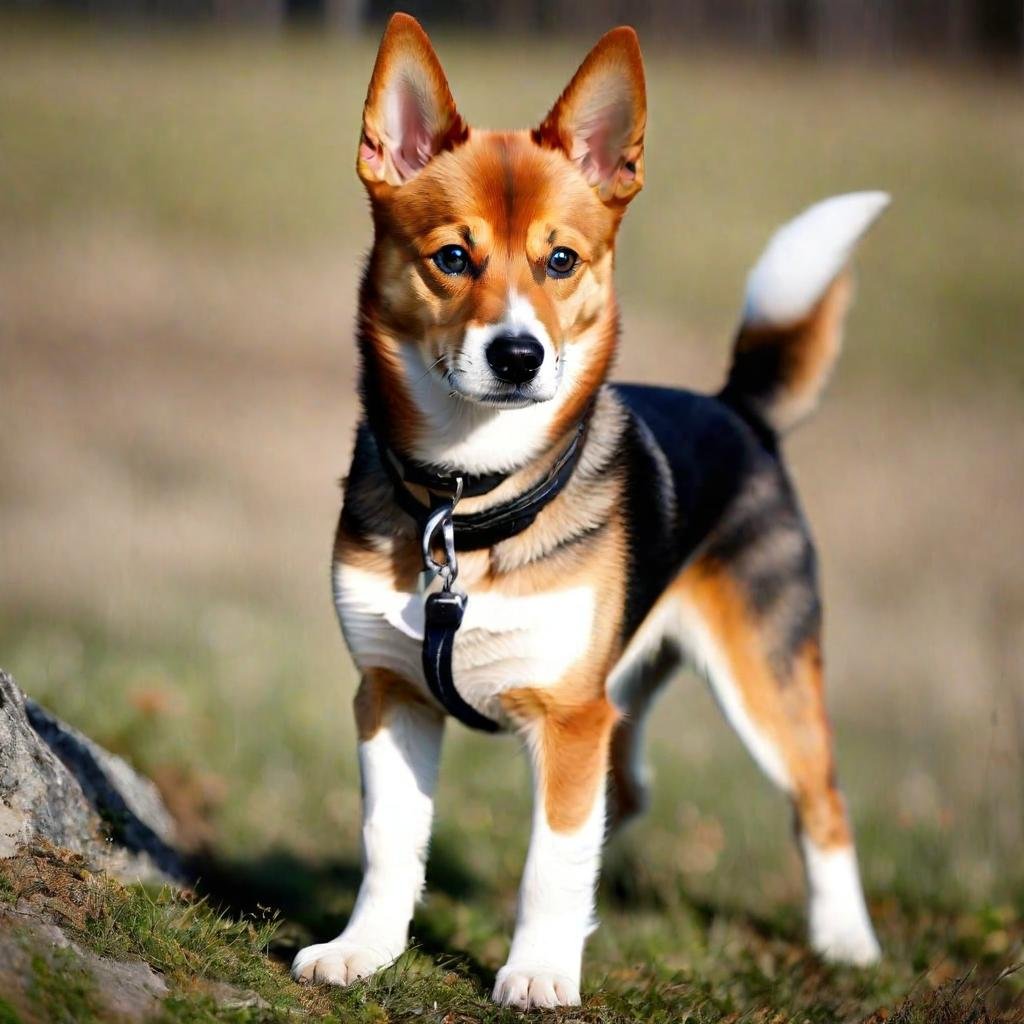
Height
- Male: 12-14 inches (30-36 cm)
- Female: 12-14 inches (30-36 cm)
Weight
- Male: 20-30 pounds (9-14 kg)
- Female: 20-30 pounds (9-14 kg)
Color
- Norwegian Lundehunds come in various colors including red, yellow, grey, black, or white, often with white markings.
Temperament
- Norwegian Lundehunds are alert, energetic and independent dogs known for their unique flexibility and climbing abilities. They are curious and playful with a strong hunting instinct. Lundehunds are loyal to their families but can be reserved with strangers.
Lifespan
- Typically, Norwegian Lundehunds live for 12-14 years.
History and Origin
- Norwegian Lundehunds, also known as Puffin Dogs, originated in Norway and were developed to hunt puffins and other sea birds on steep cliffs. They have several unique physical adaptations, including extra toes (polydactylism), which help them grip and climb rocky terrain.
Characteristics
- Norwegian Lundehunds have a distinctive appearance, with six toes on each foot, which allows them to navigate rough and slippery surfaces. They have a flexible neck that can bend backward, which aids in squeezing into narrow passages. Lundehunds have a dense, weather-resistant coat with a soft undercoat.
Care Tips
- Exercise: Norwegian Lundehunds are active dogs that require regular exercise to maintain their physical and mental health. They enjoy activities like hiking, agility training and interactive play sessions.
- Diet: Provide a balanced diet suitable for their age, size, and activity level to maintain their energy levels and overall health.
- Grooming: Their coat requires regular brushing to remove loose hair and prevent mats. They shed seasonally, so more frequent brushing may be required during shedding periods.
- Training: Lundehunds are intelligent but can be independent and stubborn. Early socialization and consistent, positive reinforcement training are important for establishing good behavior and obedience.
- Health: Norwegian Lundehunds are generally healthy dogs, but due to their unique skeletal structure they can be prone to certain health issues such as digestive disorders and joint problems. Regular veterinary checkups are important to monitor their health.
Norwegian Lundehunds make loyal and courageous companions for active individuals and families who appreciate their unique abilities and quirky personalities. They thrive in homes where they get plenty of mental and physical stimulation, as well as opportunities to explore and climb.
Choosing the Right Small Hound Dog for You ;
Choosing the right small hunting dog breed for your lifestyle starts with understanding their unique characteristics and your own preferences. Small hunting dog breeds, such as beagles, dachshunds and whippets, each have different traits that may influence your decision.
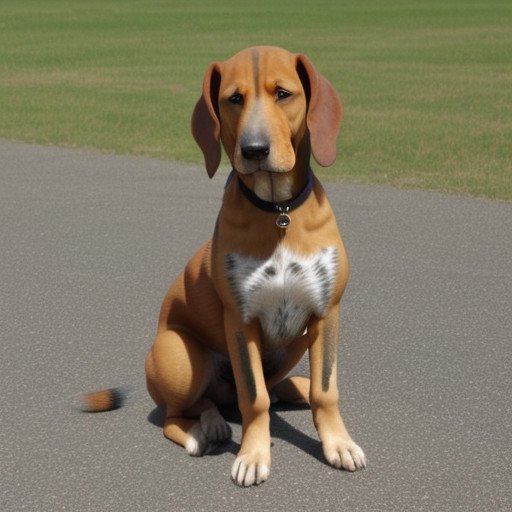
Beagles are known for their friendly nature and keen sense of smell, making them great for families who enjoy outdoor activities. With their long bodies and playful personalities, Dachshunds are ideal for people looking for a loyal companion with a little bit of adventure. Whippets, on the other hand, are cute and affectionate, making them perfect for individuals who appreciate a sleek and athletic dog.
Consider your living situation and activity level. Beagles and Whippets thrive with ample exercise, while Dachshunds may prefer indoor play sessions due to their size. Grooming needs also vary; Whippets have short coats that require minimal maintenance, while Dachshunds may require regular brushing.
Ultimately, choosing a small hunting dog breed involves balancing their characteristics with your lifestyle. Whether you’re attracted to the loyalty of beagles, the courage of Dachshunds, or the beauty of Whippets, each breed offers a unique companionship experience that can enrich your life.
Living with a Small Hound Dog ;
Living with a small hunting dog breed like beagles, dachshunds or whippets can bring joy and companionship to your life with their unique personalities and needs.
Small hunting dogs love to be a part of family activities and thrive together. They are often affectionate and love spending time with their humans, whether it’s cuddling on the couch or joining you on outdoor adventures.
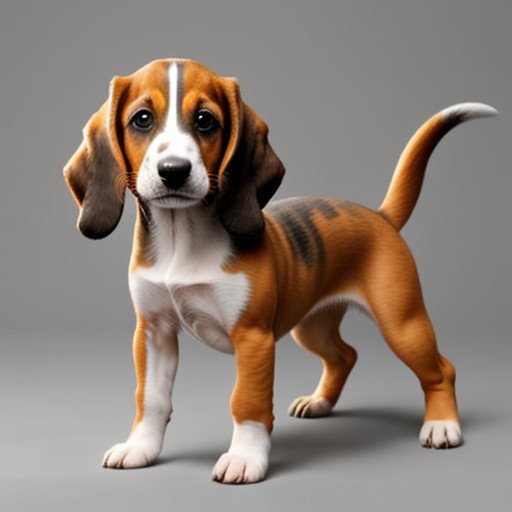
It is important to provide adequate exercise for small hunting dog breeds. Beagles enjoy sniffing outside, Dachshunds benefit from short play sessions, and Whippets love to run and play. Regular exercise helps them stay physically fit and mentally stimulated.
Small hunting dogs may require specific care depending on their coat type. Beagles and Whippets have short coats that require minimal grooming, while long-haired Dachshunds may require more frequent brushing to prevent tangles.
It is important to create a safe and motivating environment. Small hound dog breeds are curious and can explore their surroundings, so make sure your home is puppy-proofed with a secure fence and no threats.
Finally, training and socialization play an important role in shaping their behavior. Use positive reinforcement techniques and expose them to different people, animals and environments from a young age.
With love, patience, and an understanding of their unique qualities, living with a small hunting dog breed can be a rewarding experience full of unconditional love and fond memories.
** Conclusion **
Finally, small hunting dog breeds like beagles, dachshunds, and whippets bring a mix of charm, loyalty, and companionship to any home. Their unique personalities and qualities enrich our lives in countless ways.
Choosing the right breed of small hunting dog involves understanding their needs and matching them to your lifestyle. Whether you prefer the spirited playfulness of the Dachshund, the affectionate nature of the Beagle, or the graceful athleticism of the Whippet, each breed offers a different relationship filled with love and happiness.
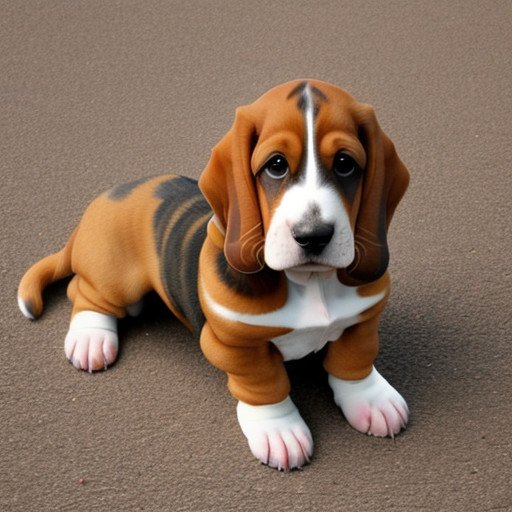
Training and socialization are important for small hunting dogs to thrive. Positive reinforcement and patience help shape their behavior and form a strong bond with their owners. Providing proper nutrition, regular exercise and veterinary care ensures health and well-being throughout their lives.
Living with a small hound dog breed means embracing their quirks and enjoying their company every day. They become not only pets, but beloved family members, bringing laughter, warmth and unforgettable moments to our lives.
With love and care, small hound dog breeds can bring happiness and fulfillment, making every day brighter with their presence.
Additional Resources ;
For more information and resources on small hunting dog breeds like beagles, dachshunds, and whippets, there are several valuable sources to search:
1. Breed Clubs and Associations:
Many breed-specific clubs and associations provide detailed information on breed standards, health considerations, and breeders. They often provide resources for finding reputable breeders or rescues.
2. Veterinary Guidance:
Your veterinarian is an invaluable resource for specific health and care advice tailored to small hunting dogs. They can provide information about nutrition, exercise needs, and general health concerns.
3. Online forums and communities:
Joining online forums or social media groups dedicated to small hound dog breeds can help you connect with other owners, share experiences, and get advice on training, behavior, and health.
4. Books and Publications:
Check out books written by reputable authors specializing in small hunting dog breeds. These often include breed history, characteristics, training tips, and care guidelines.
5. Dog Training Classes:
Enrolling in local dog training classes or workshops can provide practical guidance and socialization opportunities for your small hound.
By using these additional resources, you can deepen your understanding of small hound dog breeds and ensure you provide the best possible care and support. Stay informed and connected to get the most of your trip with your cute little hound.
You might be interested in reading this post as well White small dog breeds
Little Hounds, Big Hearts: Exploring Small Hound Dog Breeds ** Introduction ** When it comes to choosing a dog, small hunting dog breeds offer a unique blend of charm, energy, and loyalty. These little dogs may be small in size, but they have big hearts and an even bigger zest for life. Perfect for families,…
You can read this post https://tomeshnews.co.in/fluffy-small-dog-breeds/
What makes small hound dog breeds unique?
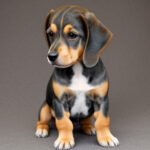
Small hound breeds are known for their keen senses, loyalty, and distinct hunting instincts.
Are small hound dogs suitable for apartment living?
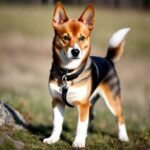
Yes, many can adapt well with sufficient exercise and mental stimulation.
Do small hound dogs get along with children and other pets?

Generally, yes, with proper socialization from a young age.
How much exercise do small hound dogs need?
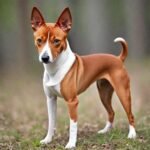
They need regular exercise tailored to their breed traits; varies from breed to breed.
What are common health concerns for small hound dog breeds?
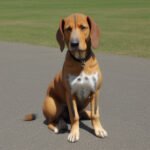
Back issues in Dachshunds, ear infections in Beagles, and joint problems in some.
Are small hound dog breeds easy to train?
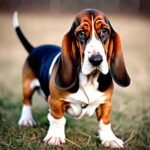
They’re intelligent but can be independent; consistent, positive training helps.
